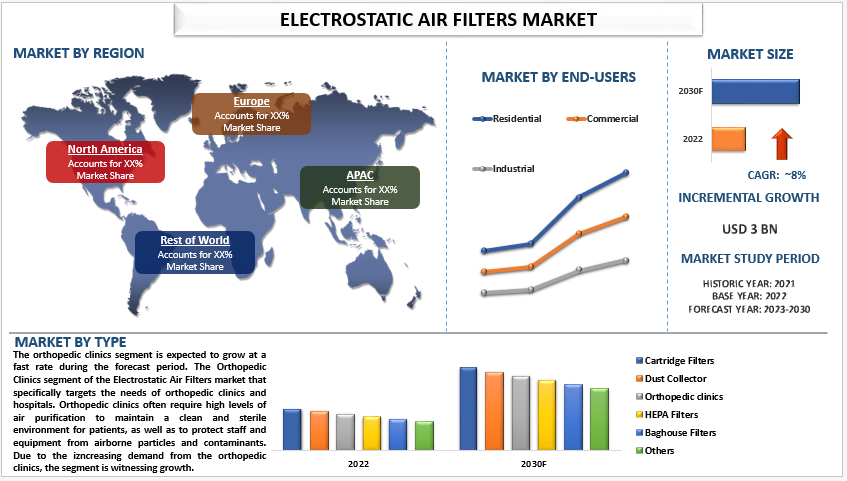
The increasing Prevalence of Head and Neck Cancer in Asia-Pacific Increases the demand for Electrostatic Air Filters
Introduction
In recent years, the Asia Pacific region has experienced rapid urbanization and industrialization, leading to an increased focus on environmental and health concerns. One of the critical challenges arising from this development is maintaining indoor air quality (IAQ) in residential, commercial, and industrial spaces. Electrostatic air filters have emerged as a promising solution to address this concern, offering effective air purification and enhanced energy efficiency. In this article, we delve into the significance, functionality, benefits, and challenges associated with electrostatic air filters in the Asia Pacific region.
The Asia Pacific region is home to some of the world's most densely populated cities, where IAQ can often be compromised due to high levels of pollutants such as particulate matter, volatile organic compounds (VOCs), and allergens. Poor IAQ can lead to a range of health issues, including respiratory diseases, allergies, and reduced productivity. As awareness about the adverse effects of poor air quality grows, there is a growing demand for effective air purification solutions.
Electrostatic air filters operate on the principle of electrostatic attraction. These filters are composed of multiple layers of polypropylene fibers with a static charge. When air passes through the filter, particles are charged and attracted to the filter's oppositely charged fibers. This process effectively captures particles as small as 0.1 microns, including dust, pollen, pet dander, mold spores, and even some bacteria.
Request To Download Sample of This Strategic Report – https://univdatos.com/get-a-free-sample-form-php/?product_id=47798&utm_source=linkedin&utm_id=him
Unlike traditional mechanical filters, electrostatic air filters do not rely solely on a physical barrier to capture particles. Instead, they actively attract and hold particles, which reduces airflow resistance and extends the filter's lifespan. This makes them an efficient choice for improving IAQ while maintaining optimal HVAC system performance.
Benefits of Electrostatic Air Filters
High Filtration Efficiency: Electrostatic air filters offer a high level of filtration efficiency, capturing a wide range of airborne particles, including those that can exacerbate allergies and respiratory issues.
Energy Efficiency: Due to their low airflow resistance, electrostatic air filters do not strain HVAC systems, resulting in energy savings and reduced utility costs.
Longevity: The durable construction of electrostatic filters allows for extended use, often requiring replacement less frequently than disposable filters.
Environmental Impact: Electrostatic filters are eco-friendly since they do not contribute to the accumulation of disposable filter waste in landfills.
Customizability: These filters can be designed to fit various HVAC system sizes and configurations, making them suitable for both residential and commercial spaces.

Conclusion
As the Asia Pacific region continues to grapple with air quality challenges stemming from rapid urbanization and industrial growth, electrostatic air filters provide a compelling solution to enhance indoor air quality. Their efficient particle capture, energy-saving capabilities, and long-term cost-effectiveness make them a viable choice for residential, commercial, and industrial applications. As technology advances and awareness of IAQ increases, electrostatic air filters are poised to play a pivotal role in creating healthier indoor environments throughout the region. According to the UnivDatos Market Insights analysis, the rising awareness will drive the global scenario of Electrostatic Air Filters and as per their “In Electrostatic Air Filters Market” report, the global market was valued at USD 3 billion in 2022, growing at a CAGR of 8% during the forecast period from 2023 - 2030 to reach USD XX billion by 2030.